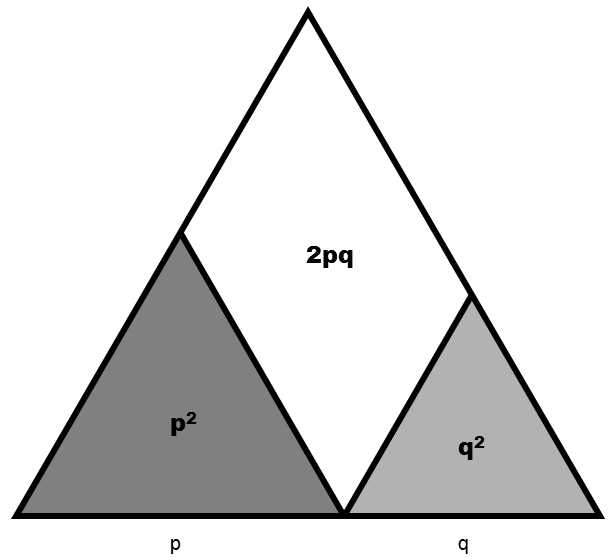II.6.1 If genes are located on different chromosomes, balanced numbers of the various genotypes, i.e. the Hardy-Weinberg equilibrium, are established in one generation in a panmictic population.
The frequency of the individual genotypes in the equilibrium state can be readily calculated from the frequency of the alleles in a certain locus. This equilibrium state is called the Hardy-Weinberg equilibrium. In a large panmictic population, i.e. in a population whose members reproduce together quite at random, this equilibrium is established during a single generation. It follows from the laws of combinatorics that, at equilibrium, genotypes a1a1, a1a2 and a2a2 will be present in a ratio of ¦2: 2¦a¦a:¦2, where ¦aand ¦adenote the frequency of alleles a1 and a2 in the previous generation (Fig. II.14). Here, the ratio in which the individual genotypes were present in the previous generation is not in any way important. During a single generation, the same representation of the individual genotypes is established, regardless of whether the original population contained, for example, only homozygotes a1a1 and a2a2, or only heterozygotes a1a2.

Fig. II.14 Graphical depiction of Hardy-Weinberg equilibrium as division of the area in an equilateral triangle. Division of the base into two parts depicts the frequency of two alleles in the studied locus and the areas of the equilateral triangles and the rhomboid depict the relative contents of all three genotypes in the population located in H.-W. equilibrium.
If we study several genes, amongst which there is no genetic linkage, for example, if each of them is located on a different chromosome, equilibrium is again established within a single generation; the numbers of the individual genotypes can be calculated for this state according to the simple rules of combinatorics.
